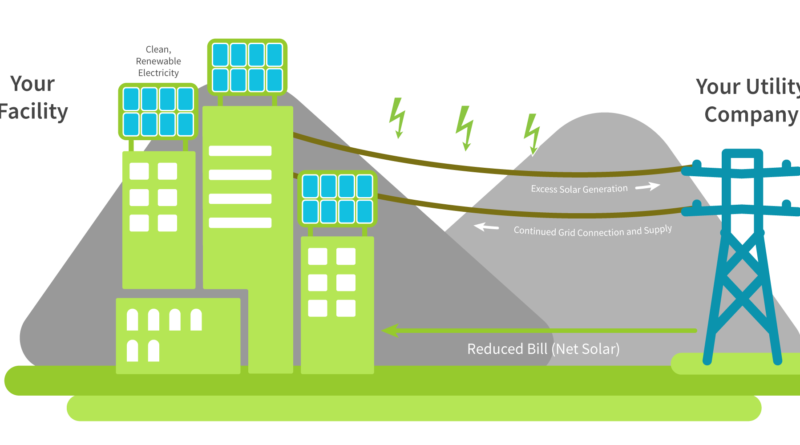SOLAR ROOFTOP – SOLAR MARKET WITH POSITIVE FUTURE POTENTIAL
Solar energy is one of the fastest-growing renewable energy sources in the world. It is clean, green, and abundant, and the best part—its fuel, the sun, is free of cost. In India, solar rooftop systems have emerged as a modern, efficient way to harness this energy. By installing solar panels on rooftops of homes, industries, institutions, and commercial establishments, individuals and businesses can generate their own electricity, save money, and contribute to a greener planet.
The Indian government has set ambitious goals to achieve 100 GW of solar power capacity, with 40 GW targeted from solar installations. While the journey has been challenging, the progress and future potential of rooftop solar in India remain very bright.
Table of Contents
Advantages of Solar Rooftop Systems
The benefits of rooftop energy are wide-ranging, not just for consumers but also for the nation’s power infrastructure:
-
Optimal use of rooftops: Converts under-utilized space into valuable energy-producing assets.
-
Lower interconnection costs: Reduces expenses associated with grid connections.
-
No need for new transmission lines: Cuts costs for developing additional transmission infrastructure.
-
Helps DISCOMs: Eases peak daytime demand, balancing electricity distribution.
-
Reduces T&D losses: Power is consumed at the point of generation, minimizing transmission losses.
-
Energy independence: Less reliance on the power grid and diesel generators, making it a sustainable and reliable long-term solution.
Indian Solar Rooftop Market: Past, Present, and Future
The solar market in India has witnessed remarkable evolution. In the past decade, the quality of solar components has improved significantly while costs have drastically reduced.
-
Rooftop bids in states like Gujarat, Maharashtra, and Tamil Nadu dropped to as low as ₹53,000 per kW, while North-Eastern states saw even lower quotations at ₹45,100.
-
Tariffs fell from ₹17 per kWh to just ₹3-4.5 per kWh in a span of seven years, reflecting nearly a 75% reduction.
-
Around 1,000 solar installers now operate as channel partners with the Ministry of New and Renewable Energy (MNRE).
Despite government initiatives, India’s solar installed capacity was around 1,862 MW (as of September 2021), far short of the 40 GW target for 2022. The sectoral break-up was:
-
Commercial: 393 MW
-
Industrial: 798 MW
-
Public Sector: 294 MW
-
Residential: 377 MW
These numbers show the need for stronger adoption, but they also highlight the immense growth opportunity ahead.
Government’s Role in Promoting Rooftop Solar
The Indian government has introduced multiple initiatives to support solar rooftop installations:
-
Capital Subsidy: Up to 30% subsidy for residential, institutional, and social sectors in general states; up to 70% in special category states.
-
Accelerated Depreciation: 40% benefit to promote corporate adoption.
-
Low-Interest Loans: $1,375 million secured from the World Bank, Asian Development Bank, and New Development Bank.
-
Skill Development: The Suryamitra program has trained over 11,000 technicians to strengthen the solar workforce.
-
Digital Tools: Mobile app ARUN (Atal Rooftop Solar User Navigator), online monitoring platforms, and geo-tagging with ISRO ensure traceability, transparency, and ease of application.
-
Net/Gross Metering: All states and UTs have notified regulations to make solar more accessible.
These efforts collectively build confidence among consumers and investors, ensuring that solar in India remains a future-ready energy solution.
Why the Future of Solar Rooftop in India is Bright
Several factors ensure that solar systems in India will continue to grow in popularity:
-
Falling solar panel prices and rising efficiency.
-
Greater awareness about clean energy among households and businesses.
-
Rising grid electricity tariffs, making solar a cost-saving alternative.
-
Strong government backing through subsidies, loans, and policies.
-
Corporate adoption as part of sustainability and ESG goals.
As more people and organizations understand the long-term financial and environmental benefits, solar is set to become a mainstream energy source in India.
FAQs on Solar Rooftop Systems
1. What is a solar rooftop system?
A solar rooftop system involves installing photovoltaic (PV) panels on the roof of a building to generate electricity from sunlight.
2. How much can I save with rooftop solar?
Savings depend on system size, location, and electricity usage. On average, households can cut their electricity bills by 50-70%.
3. Is government subsidy available for rooftop solar in India?
Yes, the government provides up to 30% subsidy for residential, institutional, and social sector rooftop systems. Special category states can receive up to 70%.
4. Can rooftop solar work during power cuts?
If connected with a battery storage system, rooftop solar can provide backup during outages. Grid-tied systems without storage will not work during blackouts.
5. How long does a solar rooftop system last?
A high-quality solar rooftop system typically lasts 25 years or more, with minimal maintenance.
Conclusion
The Indian solar market is on the path to rapid expansion, driven by falling costs, government incentives, and a growing demand for clean energy. For households, businesses, and industries, adopting rooftop solar is not just an eco-friendly choice but also a financially rewarding one.
If you’re considering making the switch, now is the perfect time to invest in solar. To explore the best solar solutions, visit SolarClue and read more insights on blog.solarclue.com.




What’s up mates, how is the whole thing, and what you wish for to say about this piece of writing, in my view its genuinely awesome designed for me.
I have been browsing online more than 2 hours today,
yet I never found any interesting article like yours.
It’s pretty worth enough for me. In my view, if all site owners and bloggers made good
content as you did, the internet will be a lot more useful than ever before.
Oh my goodness! Amazing article dude! Thank you so much, However I am encountering difficulties with your RSS.
I don’t understand the reason why I am unable to subscribe to it.
Is there anybody else having the same RSS problems? Anyone who knows the answer can you kindly respond?
Thanks!!
Hello,
Thanks for your appreciation and showing interest towards our blog posts.
Thank you,I appreciate your kindly & interesting info’s about solar systems.
I hope in soon future it will be distributed & covering all over the world.
at least To combat the alleged global warming caused by carbon dioxide emissions, the danger that is currently threatening the world in a noticeable and accelerating manner, as the whole world sees daily.
Thank you.
Best Regards.
I.C.T. Mohammad Khalil Abu Hasanain.
Thank you so much for your thoughtful comment, Mohammad Khalil Abu Hasanain. I’m glad you found the information helpful! Solar energy indeed holds great potential to combat global warming by reducing carbon emissions. With continued innovation and global collaboration, I share your hope that solar systems will soon become accessible worldwide, playing a significant role in protecting our planet.
Best regards,
Yasaswini Bora.